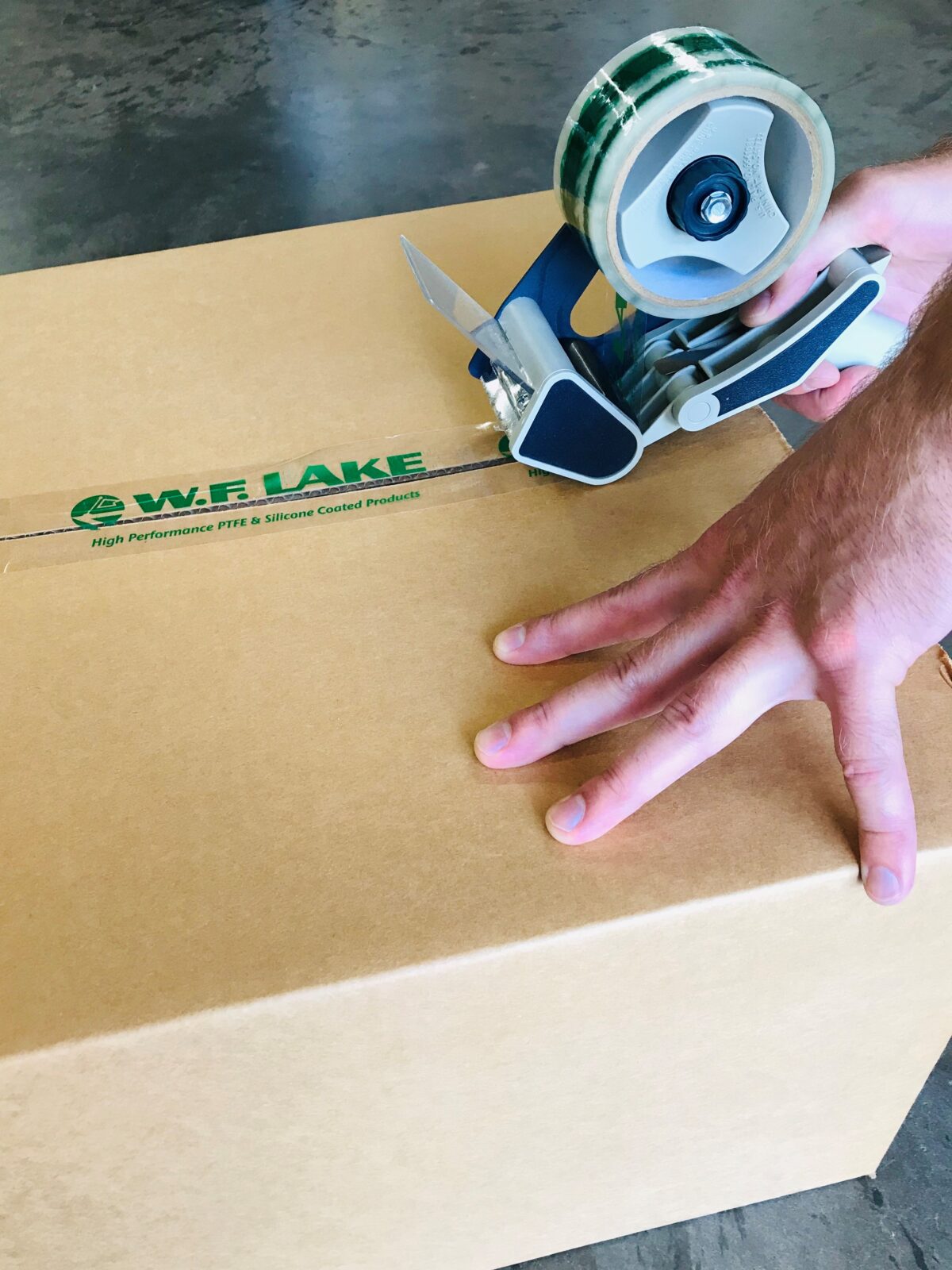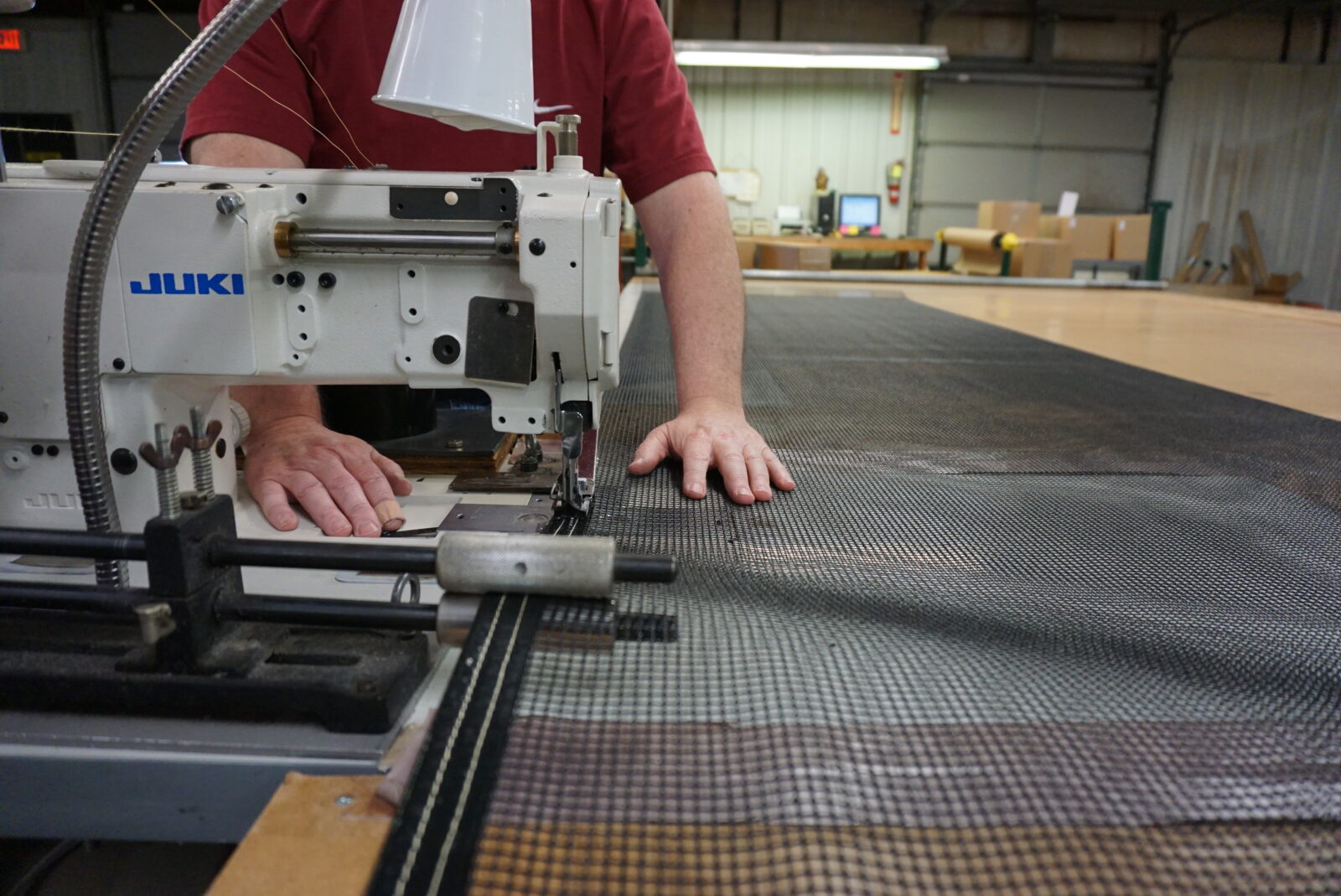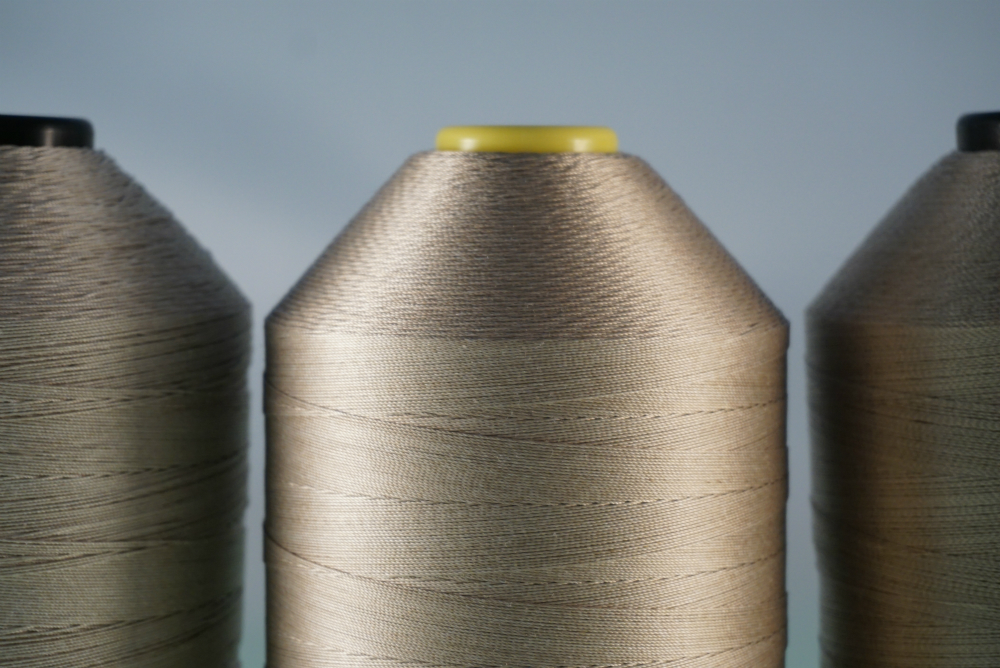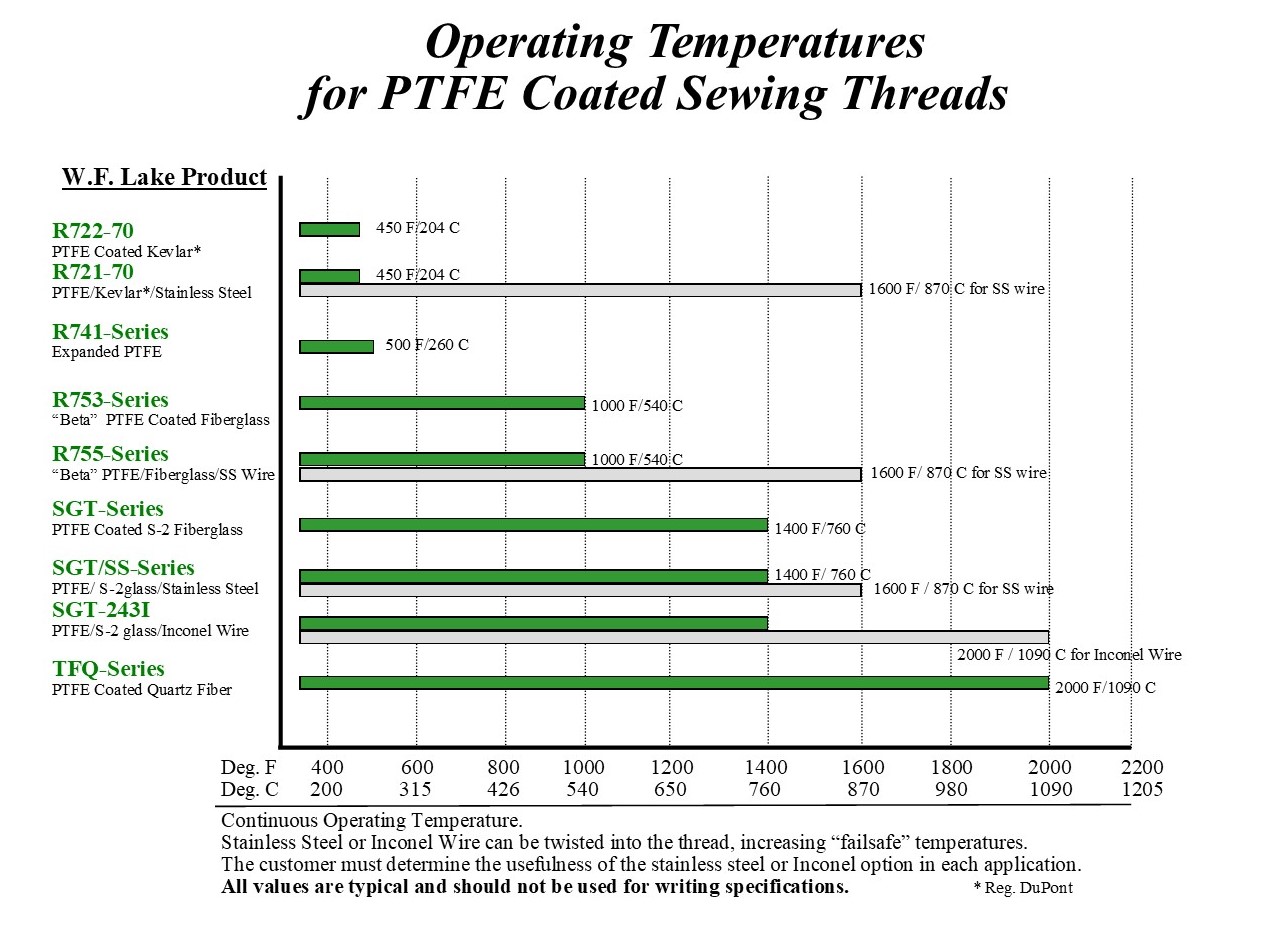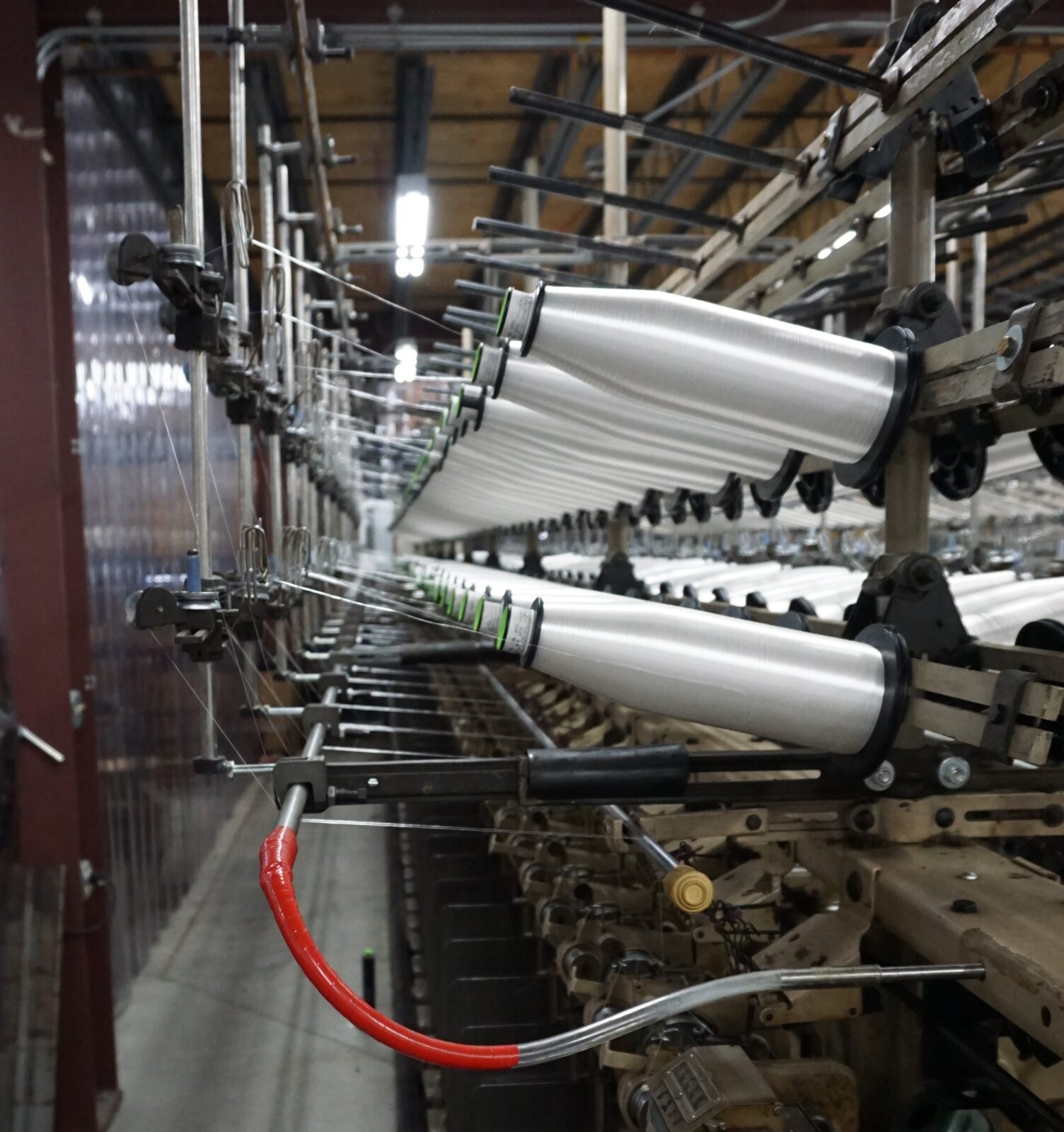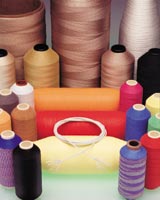
PTFE Coated Quartz Sewing Thread has some amazing properties. It operates continuously to 2,000 deg. F (1080 deg. C), making it among the highest temperature textile sewing threads available. Naturally, this performance capability comes at a cost…. but why?
Unlike fiberglass sewing thread, quartz thread is 99.9% pure silica! Fiberglass is nominally 60% silica and “silica” yarns are about 94% pure silica. The purity of Quartz yarn is what enables very high operating temperatures. Excellent tensile and flexural strength make it suitable for use as a sewing thread in extreme thermal insulation applications. Principle applications in yarn or fabric form are military in nature with the majority consumed for defense purposes.
But in this post, we’re talking about high temperature sewing thread applications. PTFE coated Fiberglass sewing threads operate at about 1000 deg. F (E-glass thread). S-2 Fiberglass sewing thread operates to 1400 deg. F (S-2 fiberglass sewing thread with Inconel wire or stainless steel wire enables “fail-safe” operation at very high temperatures, but that is not a pure fiber sewing thread). How about Silica sewing thread? Silica yarns operate to 1800 deg. F, so why not go with a silica sewing thread for all but the most extreme temperatures? The problem is that silica yarn does not exhibit the same tensile and flexural strength as quartz or fiberglass. Silica yarn is produced by chemically leaching fiberglass yarns, thus increasing operating temperatures but degrading tensile and flexural strength. To overcome this weakness, silica threads are often twisted with Rayon yarn to enable sewing, but the Rayon is quickly consumed upon exposure to higher operating temperatures. PTFE coated Quartz sewing thread does not require the addition of Rayon or any other fiber to enhance tensile and flexural strength. Quartz yarns are not simply leached fiberglass yarns, rather they are manufactured by first mining a very high purity quartz ore or sand. That sand is further cleaned and then processed in high temperature furnaces to produce a clear fused silica rod which becomes the feedstock for manufacturing quartz fibers. You can see where the cost comes into play with a quartz yarn or sewing thread.
Interestingly, a few years ago we were asked to produce a high temperature sewing thread using a customer-supplied silica yarn without adding a Rayon fiber, instead attempting to rely on the PTFE coating to enhance “sewability” and flexural strength. The results were unimpressive. We found the finished Silica sewing thread was weaker than fiberglass or Quartz thread in tensile strength by a factor of 4 to 5 times and weaker in knot strength by a factor of 11 to 12 times! The customer thanked us for our efforts and dropped the project.
So, when it comes to the highest temperature sewing thread available without the use of sacrificial fibers, PTFE coated Quartz sewing thread deserves a close look despite its high cost. In some cases, there simply is no alternative. We currently manufacture 5 sizes from TFQ-12 to TFQ-30. (Remember, however, that in most cases the cost of the actual thread used in the final product represents a small fraction of the overall cost of the finished product… sounds like an opportunity for another blog post… wait, we already wrote that one, and you can find it here!).
Thanks for taking a moment to read our latest post. As always, let us know if you have any questions or would like to see a sample.

